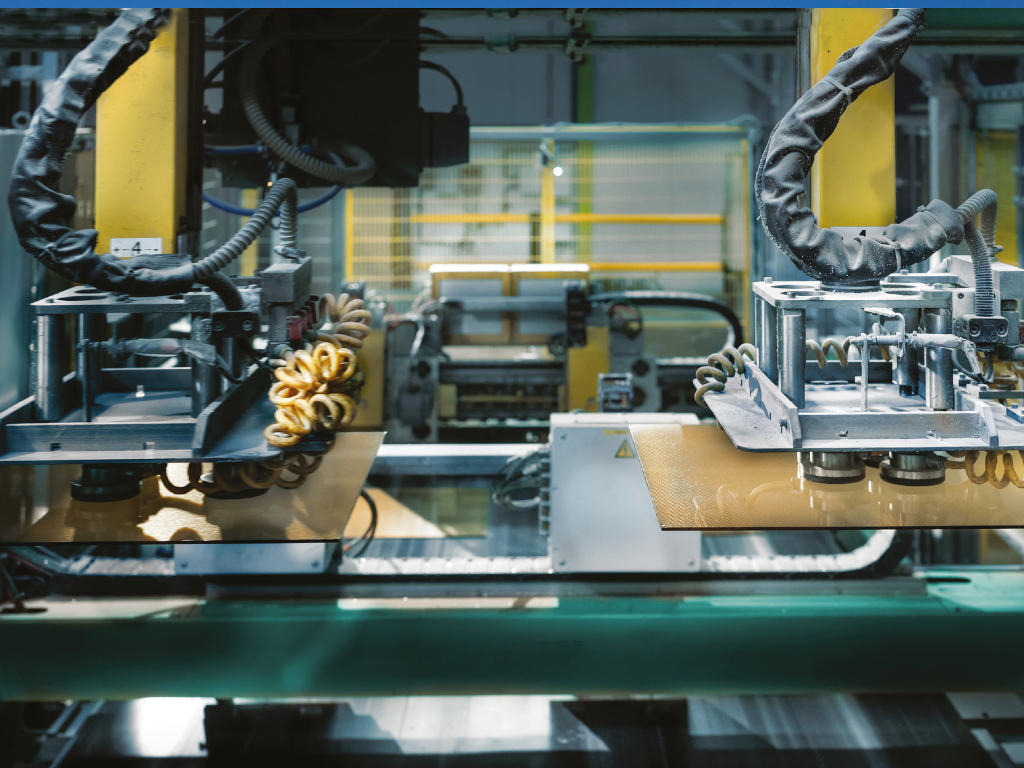For more than 50 years, ceramic glass cooktops from Schott have remained bestsellers thanks to a range of technical properties. Not only are the cooktops made exclusively from sustainable natural materials but they can also withstand high temperature differences and thermal shocks. In addition, they’re an extremely robust product with high chemical resistance. Having won four German ‘Brand of the Century’ awards (2013, 2016, 2019 and 2022), it’s even more interesting to learn how Schott is able to guarantee this quality level day after day.
“Quality is determined by a large number of important factors in the manufacturing process, from melting and moulding to quality control,” explains Matthias Stubenrauch, Production Manager at Schott in Mainz, Germany. It’s possible to produce large batches of increasing complexity and variety only if the process works consistently on the highest level.
Simulated engineering
Material experts know that raw glass is loaded from the furnace to production lines before undergoing cutting, drilling, edge grinding and further finishing through ceramisation in a 900°C furnace. When a new machine was being built for loading raw glass in cold post-processing at the end of 2021, it was the first time that a team of Schott experts had used a comprehensive simulation instead of working on the machine directly.
For some time, Schott has been converting selected machines to ‘digital native CNC,’ better known as Sinumerik One from Siemens. This innovative controller represents a further component in the digital transformation of machines because it works with software to create the machine controller and associated digital twin from one engineering system – and in this way contributes to the seamless integration of hardware and software.
Schott took its loader one step further: for engineering, the in-house experts immediately opted for Siemens’ Create MyVirtual Machine/Operate software, which automatically meant a virtual Sinumerik One. This eliminated the need for a real hardware controller because the virtual Sinumerik One already has the Simatic S7-PLCSIM Advanced software – making it possible to generate virtual controllers for simulating an S7-1500 or ET 200SP CPU and use them for the comprehensive simulation of functions. All that was needed was a simulation computer to shift the work to a purely virtual environment.
A virtualised CNC system makes work faster, more flexible and better overall because all of the machine’s functions and feasibilities can be tested ahead of time. Complete virtual modelling of the development process significantly shortens product development time while also speeding up commissioning. Collaboration within the team also took on a new facet because the digital twin of engineering creates a virtual basis for discussion where all the disciplines can easily be consulted before the real machine is built. Machine concepts and functions can be systematically discussed beforehand. This reduces the risk of misdirected investments as well as a dependence on available hardware or free test racks.
Connecting to robotics
Schott then took simulation even further. This project was the first time that the company linked its existing and proven Process Simulate robotics simulation software to Create MyVirtual Machine/Operate software, which was new to Schott. This version is ideal for plants that use a lot of robots, and raw glass loading processes are a good example of this. The Process Simulate 3D simulation platform from Siemens is a technology for robot and plant simulations. In addition to basic functions for geometry simulation and offline programming, Process Simulate has an abundance of functions for modelling plants and controllers as realistically as possible on one platform.
For example, Schott was able to pre-test whether the machine’s layout would fit in the available space, whether there would be a risk of collision, and whether the exacting cycle times could be achieved. Using the geometry simulation and layout planning in the simulation system, it was possible to reduce the functional risks in machine operation to a minimum. Even before the machine was built, Schott was able to ensure the concept and acquaint itself with all the functions. Simit software from Siemens – which already had a long track record at Schott – served as the link between Create MyVirtual Machine/Operate and Process Simulate. This made it possible to couple Create MyVirtual Machine/Operate with Process Simulate and develop the behavioural model further.
Simulation during ongoing operation
The machine has now been operating at Schott in Mainz since spring 2022. If additional functions are needed, Schott won’t have to shut down the line because a collaboration between a variety of simulation tools will once again prove its worth and deliveries of ceramic glass cooktops to the global markets will continue reliably.


